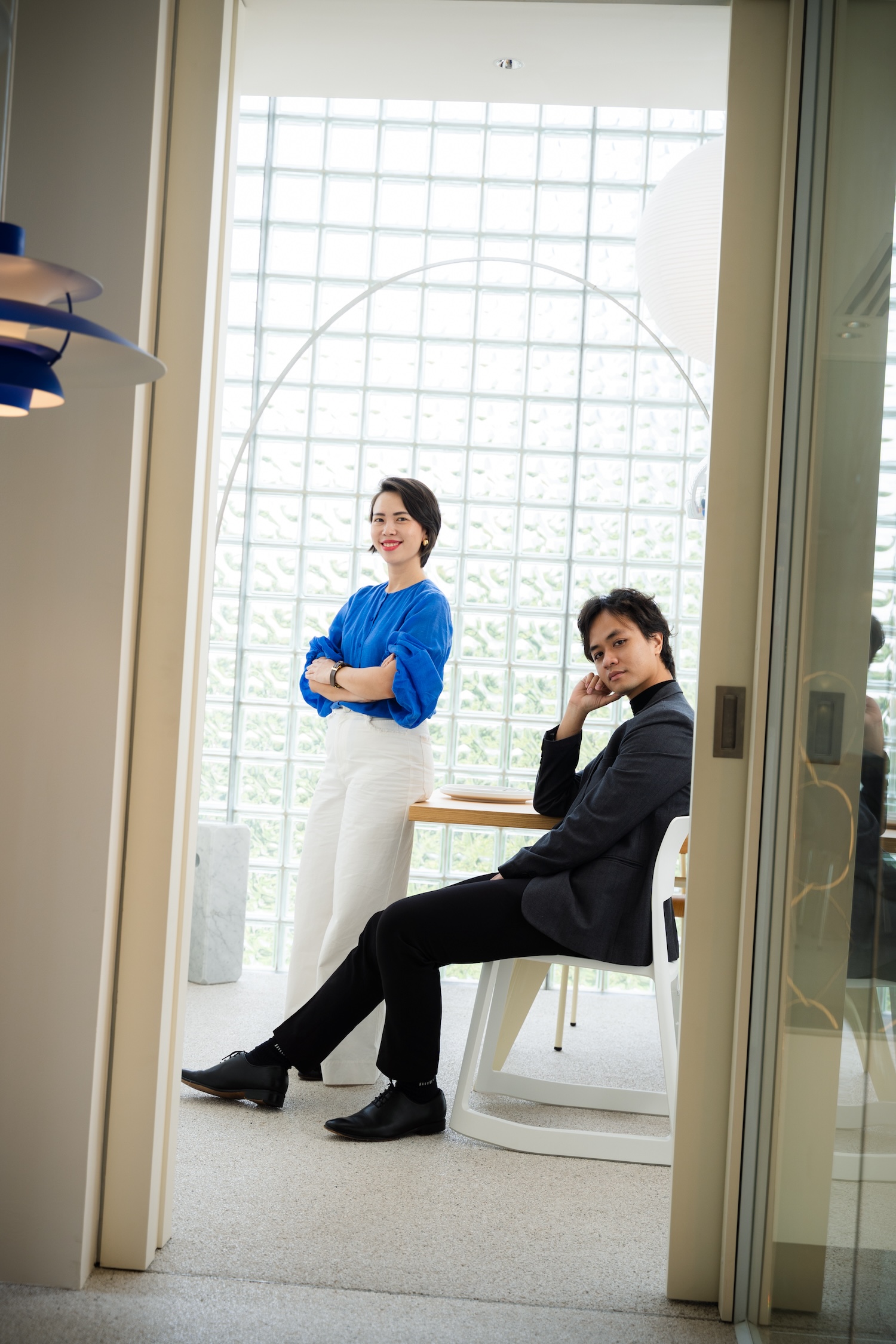Academic, distant, and sleep-inducing — three common assumptions still shadow symphonic music in Vietnam, a genre long tucked behind velvet curtains and concert hall walls.
Kathy Lương started out like any other concertgoer. But in a Disney-themed orchestral performance she attended with her daughter three years ago, something shifted. On stage was the Imagine Philharmonic Orchestra and Dustin Tiêu — a Gen Z conductor.
“My daughter had never been to Disneyland, but during those two hours of music, it felt like she met every princess. And for me, it was like returning to a childhood I’d almost forgotten.”
After years of quietly observing and seeing how difficult it is for young orchestras to self-organize, sell tickets, and stay afloat, Kathy chose to step in. She partnered with Dustin, not just to keep the music going, but to bring it closer. That’s how OrcheStars began, with a simple but ambitious mission: to bring symphonic music closer to Vietnam’s public.
With an imaginative approach, IPO’s performances now extend beyond the concert hall: sometimes featuring pop artists, immersive staging, or even moments where children take the stage themselves.
But symphonic music, with all its depth and structure, was never built to entertain the masses. Can it really be made more accessible, more playful, more public without losing what makes it special?
Ahead of their upcoming show Once Upon A Time, happening July 19–20, we speak with Kathy and Dustin — two people working to soften the lines around symphonic music, and to remind us that this art form, too, has room for imagination.
From furniture design to orchestral music — what do you see as the biggest challenge for classical music in Vietnam?
Kathy: The biggest challenge, I think, is still the public's perception. The Vietnamese public sees symphonic music as academic, hard to understand, even boring — reserved for a niche audience. I used to think the same way.
But that’s exactly why I value what Dustin is doing. When orchestral music is reimagined through contemporary works, it becomes something much more immediate — intimate, even. After our shows, I’ve had audience members come up and say they got goosebumps. The music brought back feelings they’d forgotten in the rush of adulthood. Moments like that mean a lot to me.
The truth is, symphonic music is the foundation of so much of what we listen to today. Whether it’s electronic, pop, or jazz — it all starts with the classical instruments: piano, violin, strings. That’s the root. We may move forward, but it’s where we begin.

The second challenge is a sense of distance. Many people feel that symphonic music simply isn’t for them, that it belongs to an elite world but I’ve always believed that music, more than any other art form, is fundamentally public.
A beautiful painting or a well-designed chair may require taste, knowledge, or context. But music? No matter who you are or where you come from, when the melody starts, you can always feel something — a sting in the chest, a moment of stillness.
Of course, running the company and the orchestra hasn’t been easy. In Vietnam, the classical music world and the entertainment industry have grown up like two parallel worlds that rarely intersect. Few have tried, and even fewer have succeeded, in bridging that gap. But that’s what I hope to do: to create a bridge between the two.
So that audiences, even those fluent in the language of pop culture can still have the chance to encounter something deeper, something quieter, and maybe even something lasting.
Kathy Lương spoke about wanting to reframe the common stereotypes around symphonic music, particularly from the perspective of those who view it as overly academic and inaccessible. But for you, Dustin, as someone trained in music and now a conductor yourself, how do you see that perception? Do you think it truly exists? Or are there other challenges beneath the surface?
Dustin: The stereotype Kathy mentioned is absolutely real. People watch Disney films or Hollywood movies and get emotionally moved by the music, but very few realize that those scores are written by symphonic composers like Hans Zimmer, John Williams, or Alan Menken. To most, it’s just “movie soundtracks.”
So when they hear those same pieces performed live, they’re surprised: “Oh, I’ve heard this so many times, but I didn’t know it was orchestral music.” They enjoy it, sometimes even love it, but they’ve never seen it presented in an orchestral setting before.
That’s why, in many people’s minds, going to a symphony still conjures a very specific image: sitting in a grand concert hall, listening to Beethoven or Mozart. Formal. Serious. Distant.

Back to Kathy’s story, part of the reason she connected so quickly with symphonic music is because she grew up with Disney, with Hollywood films. So when that music came alive in a different form, it spoke to something she already knew.
That’s exactly what OrcheStars and I are trying to recreate: a sense of familiarity, something the audience can recognize and feel close to. And from there, they may open themselves up to symphonic music in new ways.
You also mentioned that orchestral music is often associated with classical traditions. So when OrcheStars tries to modernize it and make it more accessible, does it come at the cost of losing its classical essence?
Dustin: It would be dishonest to say there’s no trade-off. Orchestral music was created to be performed in concert halls, spaces designed with the right acoustics to carry sound evenly and clearly. But in Vietnam, we still lack proper venues for symphonic music to be experienced at its best.
So when we put together a show for the broader public like the Disney concert, we move into open venues like stadiums or multi-purpose halls. That means screens, cameras, visual effects, LED panels — elements that help create a more interactive experience. And the challenge then becomes: how do we preserve the musical quality of the symphony in a space not built for it?
My hope is that, over time, once the audiences have been emotionally moved by our performances— they’ll start seeking out more. Some might look for the quiet intimacy of a concert hall. Others may want to stay with the bigger, more open format. And that’s the future I hope we’re building toward: more choice, more ways in.
Kathy: We invest more in the entertainment, experience, and scale aspects of the performance to make symphonic music more accessible. We bring in directors with experience in entertainment to help tell stories in a language the public understands.
That’s why for this upcoming show, I’ve invited director Lê Xuân Kỳ from AURA Communication, as well as pop artists like Đức Tuấn and Lương Bích Hữu to join us on stage.

We’ve talked about what brings audiences closer to a show. But what about the people behind the music, especially the musicians you work with? These days, many artists no longer feel committed to a single concert hall or institution. In a landscape without much structural stability, what do musicians need?
Dustin: There’s a word that makes me sad when talking about musicians in Saigon — “laborer.” Because that’s how many of them are forced to live: constantly hustling. They take on commercial gigs, entertainment shows, anything they can. But there’s no real home, no place to return to, no long-term commitment.
At the beginning of their careers, they’re still excited and there’s energy, freshness, the artist’s spark. But over time, with too many shows and too much fatigue, that fire dims. They become someone who just shows up, performs, and leaves. And something gets lost along the way.
That’s why, within our means and our time, Kathy and I want to build a place where symphonic musicians can fully devote themselves to the craft with the kind of stability that lets them grow. Whether it’s behind velvet curtains or under stadium lights, what matters is that they get to play music with passion and love.
Popularizing symphonic music is still a beautiful yet distant goal. New formats, contemporary storytelling — they can spark curiosity, but the questions remain: Can symphonic music truly step outside the concert hall? And will the public be ready for a form of art that doesn’t fit into their usual patterns of entertainment?
The answer may remain open — at least until Once Upon A Time takes the stage for the first time.
But if we still believe that music can move people, can leave behind moments of wonder and memory then Once Upon A Time is a performance worth witnessing, and a quiet effort worth listening to.
About OrcheStars’ upcoming show Once Upon A Time
- Location: Ho Xuan Huong Stadium, District 3, Ho Chi Minh City
- Time: July 19 & 20, 2025
- Hotline: 0972444023 or 0979055253
Find out more information about OrchesStars or book tickets on the website.
